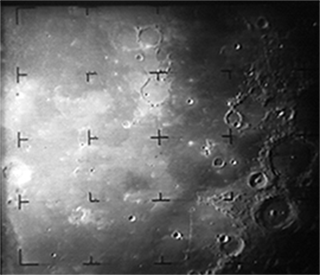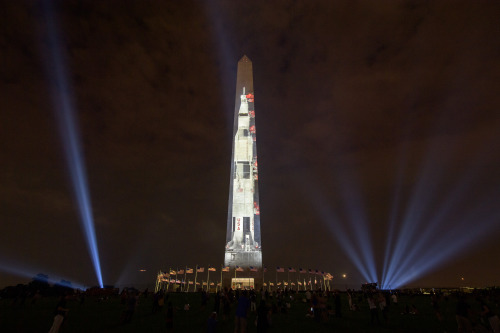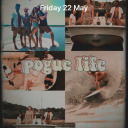#InternationalCatDay? Try #IntergalacticCatDay.


#InternationalCatDay? Try #IntergalacticCatDay.
Check out features of our feline friends that have come to life as interstellar phenomena!
Pictured first, the Cat’s Paw Nebula is located about 4,200-5,500 light-years from Earth – situated in our very own Milky Way Galaxy. It was named for the large, round features that create the impression of a feline footprint and was captured by our Spitzer Space Telescope. After gas and dust inside the nebula collapse to form stars, the stars may in turn heat up the pressurized gas surrounding them. This process causes the gas to expand into space and form the bright red bubbles you see. The green areas show places where radiation from hot stars collided with large molecules called “polycyclic aromatic hydrocarbons,” causing them to fluoresce.
Next, you’ll find the Cat’s Eye Nebula. Residing 3,000 light-years from Earth, the Cat’s Eye represents a brief, yet glorious, phase in the life of a sun-like star. This nebula’s dying central star may have produced the simple, outer pattern of dusty concentric shells by shrugging off outer layers in a series of regular convulsions. To create this view, Hubble Space Telescope archival image data have been reprocessed. Compared to well-known Hubble pictures, the alternative processing strives to sharpen and improve the visibility of details in light and dark areas of the nebula and also applies a more complex color palette. Gazing into the Cat’s Eye, astronomers may well be seeing the fate of our sun, destined to enter its own planetary nebula phase of evolution … in about 5 billion years.
Make sure to follow us on Tumblr for your regular dose of space: http://nasa.tumblr.com.
More Posts from Mousoudi20 and Others

The trickster “Blinking Planetary”
Planetary nebula NGC 6826 is located about 4,200 light years from Earth in Cygnus. When observers look directly at it through a small telescope, they typically see only the nebula’s sparkling-white central star. However, by averting one’s gaze, glancing away from the central star, the nebula’s bulbous dust clouds come into view. This optical trickery earned this planetary nebula the name the “Blinking Planetary.”
Over the next several thousand years, the nebula will gradually disperse into space, and then the central star will slowly cool as it radiates its energy for billions of years as a white dwarf.
Make sure to follow us on Tumblr for your regular dose of space: http://nasa.tumblr.com
Several countries presented their business potentials at dedicated stands - like Denmark. #ITER #IBF19 #WeAreITER https://t.co/Symkfl50mh

2019 August 14
Saturn Behind the Moon Image Credit: Peter Patonai (Astroscape Photography)
Explanation: What’s that next to the Moon? Saturn. In its monthly trip around the Earth – and hence Earth’s sky – our Moon passed nearly in front of Sun-orbiting Saturn earlier this week. Actually the Moon passed directly in front of Saturn from the viewpoints of a wide swath of Earth’s Southern Hemisphere. The featured image from Sydney, Australia captured the pair a few minutes before the eclipse. The image was a single shot lasting only 1/500th of a second, later processed to better highlight both the Moon and Saturn. Since Saturn is nearly opposite the Sun, it can be seen nearly the entire night, starting at sunset, toward the south and east. The gibbous Moon was also nearly opposite the Sun, and so also visible nearly the entire night – it will be full tomorrow night. The Moon will occult Saturn again during every lap it makes around the Earth this year.
∞ Source: apod.nasa.gov/apod/ap190814.html
The scaffolding has come off the lower cylinder of the #ITER #cryostat. Clad in thin film it is now being scanned by metrologists for reverse engineering and will then be cocooned for storage until assembly. #fusionenergy #WeAreITER https://t.co/DOag9p1rPp https://t.co/xoi5GTq0Vc


Una nueva capa sobre nuestro córtex y fuera de los límites del craneo.

Women’s History Month Spotlight: Gabriella Sanchez
Oh, hello. Looking to celebrate an incredible WOC artist for Women’s History Month? Let us suggest one of our Tumblr @creatrs, Gabriella Sanchez (@thatnoisegallery). This LA-based Mexican-American artist is one you’re going to want to pay attention to. In the interest of celebrating women and how they impact their world, we’ve touched base with her to discuss how feminism intersects with her work. Read on, reader.
Let’s start by telling us a little bit about yourself. How did you become the artist that you are today?
That’s a big question in which the true answer is that it’s a result of all my experiences and interactions that are too many to list here. The more direct but partial answer is that I went to college without knowing what I wanted to do and started taking art electives until those became the only classes I was taking. I was really attracted to the freedom of being an artist—the idea that you could spend your time seeking out whatever ideas interested you and then turn into something that people could engage with and it could be under this expansive umbrella of art. That was and still is thrilling to me.
As a Mexican-American woman, your experiences and intersections in race, gender, and socioeconomic status all play a part in your work. Why do you think it’s important for art spaces to exhibit more work by women of color?
I would say that yes, the things you mentioned above play a role in my work, but that’s because everyone’s personal experiences play some role in their work even if they aren’t acknowledged. It’s just framed in a different light when a person from any marginalized group creates art. Specifically, in painting, the work is an assertion of what an artist thinks is beautiful or interesting or worth looking at and that inherently is a message and a showcase of their viewpoint. An artist who paints a flower versus an artist who paints a bus bench with graffiti are both painting what they want you to see. In that sense, the work could be seen as the same. They just get framed in a different light. That’s why it’s important for artists of marginalized groups to be included in these art spaces, so that our context of viewing work gets larger so we can really see the work without knee-jerk biases blocking our ability to fully engage with a work.

Let’s talk about your featured artwork. Women of color and trans women are people most affected by violence. Talk us through the process of this piece and why it’s important?
The idea behind this piece is that this is a collective issue. Not an issue that is just on the shoulders or survivors or only women, but everyone. Only with that mentality will we be able to make moves towards a future where women are safe and we can all move forward [with] equality and equity for everyone.
If you want more of Gabriella’s art, follow her at @thatnoisegallery. If you want more interviews with women making an impact in their fields, stay tuned to @action! We’re celebrating Women’s History Month all month long.

If #NationalCheeseDay has you thinking about the Moon, you’re not alone. 🧀
In 1965, the Ranger 9 probe captured these sharp images of a cratered lunar surface just moments before its planned impact. What we learned paved the way for Apollo. #Apollo50th
TESS’s first-year of planet-hunting was out of this world
Have you ever looked up at the night sky and wondered … what other kinds of planets are out there? Our Transiting Exoplanet Survey Satellite (TESS) just spent its first year bringing us a step closer to exploring the planets around the nearest and brightest stars in the southern sky and is now doing the same in the north.

TESS has been looking for dips in the brightness of stars that could be a sign of something we call “transits.” A transit happens when a planet passes between its star and us. It’s like when a bug flies in front of a light bulb. You may not notice the tiny drop in brightness when the bug blocks some of the light from reaching your eyes, but a sensitive camera could. The cameras on TESS are designed to detect those tiny drops in starlight caused by a transiting planet many light-years away.

In the last year TESS has found 24 planets and more than 900 new candidate planets. And TESS is only halfway through its goal of mapping over three-fourths of our skies, which means there’s plenty more to discover!
TESS has been looking for planets around the closest, brightest stars because they will be the best planets to explore more thoroughly with future missions. We can even see a few of these stars with our own eyes, which means we’ve been looking at these planets for millions of years and didn’t even know it.

We spent thousands of years staring at our closest neighbor, the Moon, and asking questions: What is it like? Could we live there? What is it made of (perhaps cheese?). Of course, now we can travel to the Moon and explore it ourselves (turns out, not made of cheese).

But for the worlds TESS is discovering, the commute to answer those questions would be killer. It took 35 years for Voyager 1 to cross into interstellar space (the region between stars), and it’s zipping along at over 38,000 mph! At that rate it would take more than a half-a-million years to reach the nearest stars and planets that TESS is discovering.
While exploring these distant worlds in person isn’t an option, we have other ways of learning what they are like. TESS can tell us where a planet is, its size and its overall temperature, but observatories on the ground and in space like our upcoming James Webb Space Telescope will be able to learn even more — like whether or not a planet has an atmosphere and what it’s made of.
Here are a few of the worlds that our planet hunter discovered in the last year.
Earth-Sized Planet
The first Earth-sized planet discovered by TESS is about 90% the size of our home planet and orbits a star 53 light-years away. The planet is called HD 21749 c (what a mouthful!) and is actually the second planet TESS has discovered orbiting that star, which you can see in the southern constellation Reticulum.

The planet may be Earth-sized, but it would not be a pleasant place to live. It’s very close to its star and could have a surface temperature of 800 degrees Fahrenheit, which would be like sitting inside a commercial pizza oven.
Water World?
The other planet discovered in that star system, HD 21749 b, is about three times Earth’s size and orbits the star every 36 days. It has the longest orbit of any planet within 100 light-years of our solar system detected with TESS so far.

The planet is denser than Neptune, but isn’t made of rock. Scientists think it might be a water planet or have a totally new type of atmosphere. But because the planet isn’t ideal for follow-up study, for now we can only theorize what the planet is actually like. Could it be made of pudding? Maybe … but probably not.
Magma World
One of the first planets TESS discovered, called LHS 3844 b, is roughly Earth’s size, but is so close to its star that it orbits in just 11 hours. For reference, Mercury, which is more than two and a half times closer to the Sun than we are, completes an orbit in just under three months.

Because the planet is so close to its star, the day side of the planet might get so hot that pools and oceans of magma form on its rocky surface, which would make for a rather unpleasant day at the beach.
TESS’s Smallest Planet
The smallest planet TESS has discovered, called L 98-59 b, is between the size of Earth and Mars and orbits its star in a little over two days. Its star also hosts two other TESS-discovered worlds.

Because the planet lies so close to its star, it gets 22 times the radiation we get here on Earth. Yikes! It is also not located in its star’s habitable zone, which means there probably isn’t any liquid water on the surface. Those two factors make it an unlikely place to find life, but scientists believe it will be a good candidate for follow-up studies by other telescopes.
Other Data
While TESS’s team is hunting for planets around close, bright stars, it’s also collecting information on all sorts of other things. From transits around dimmer, farther stars to other objects in our solar system and events outside our galaxy, data from TESS can help astronomers learn a lot more about the universe. Comets and black holes and supernovae, oh my!

Interested in joining the hunt? TESS’s data are released online, so citizen scientists around the world can help us discover new worlds and better understand our universe.
Stay tuned for TESS’s next year of science as it monitors the stars that more than 6.5 billion of us in the northern hemisphere see every night.
Make sure to follow us on Tumblr for your regular dose of space: http://nasa.tumblr.com.

hot

50 years ago, three Apollo astronauts rode this 363 foot tall rocket, the Saturn V, embarking on one of the greatest missions of mankind – to step foot on another world. On July 20, 1969, astronauts Buzz Aldrin, Michael Collins and Neil Armstrong made history when they arrived at the Moon. Thanks to the Saturn V rocket, we were able to complete this epic feat, returning to the lunar surface a total of six times. The six missions that landed on the Moon returned a wealth of scientific data and almost 400 kilograms of lunar samples.
In honor of this historic launch, the National Air and Space Museum is projecting the identical rocket that took our astronauts to the Moon on the Washington Monument in Washington, D.C.
This week, you can watch us salute our Apollo 50th heroes and look forward to our next giant leap for future missions to the Moon and Mars. Tune in to a special two-hour live NASA Television broadcast at 1 p.m. ET on Friday, July 19. Watch the program at www.nasa.gov/live.
Make sure to follow us on Tumblr for your regular dose of space: http://nasa.tumblr.com.
-
 blacklicoriceaddict liked this · 4 months ago
blacklicoriceaddict liked this · 4 months ago -
 emibertachini liked this · 1 year ago
emibertachini liked this · 1 year ago -
 ancoputlico liked this · 1 year ago
ancoputlico liked this · 1 year ago -
 thewriteitinerary reblogged this · 1 year ago
thewriteitinerary reblogged this · 1 year ago -
 mendely liked this · 2 years ago
mendely liked this · 2 years ago -
 joseserrano2001 liked this · 2 years ago
joseserrano2001 liked this · 2 years ago -
 thefallenangel2008 liked this · 3 years ago
thefallenangel2008 liked this · 3 years ago -
 souless6 liked this · 3 years ago
souless6 liked this · 3 years ago -
 isla-vic liked this · 3 years ago
isla-vic liked this · 3 years ago -
 davidtdiaz702 liked this · 3 years ago
davidtdiaz702 liked this · 3 years ago -
 historyfiction reblogged this · 3 years ago
historyfiction reblogged this · 3 years ago -
 allerasarellasand reblogged this · 3 years ago
allerasarellasand reblogged this · 3 years ago -
 liptonrm reblogged this · 3 years ago
liptonrm reblogged this · 3 years ago -
 cdnostalgia liked this · 3 years ago
cdnostalgia liked this · 3 years ago -
 noodlesramen13 liked this · 4 years ago
noodlesramen13 liked this · 4 years ago -
 stevia333k-naturepics reblogged this · 4 years ago
stevia333k-naturepics reblogged this · 4 years ago -
 stevia333k liked this · 4 years ago
stevia333k liked this · 4 years ago -
 rhea2061 liked this · 4 years ago
rhea2061 liked this · 4 years ago -
 artsyclxwn liked this · 4 years ago
artsyclxwn liked this · 4 years ago -
 madkanji liked this · 4 years ago
madkanji liked this · 4 years ago -
 unspoken-words1462 reblogged this · 4 years ago
unspoken-words1462 reblogged this · 4 years ago -
 unspoken-words1462 liked this · 4 years ago
unspoken-words1462 liked this · 4 years ago -
 chaotic-hypnotic-erotic liked this · 4 years ago
chaotic-hypnotic-erotic liked this · 4 years ago -
 echobunnygo-go liked this · 4 years ago
echobunnygo-go liked this · 4 years ago -
 semirgsnoisiv liked this · 4 years ago
semirgsnoisiv liked this · 4 years ago -
 satireporn liked this · 4 years ago
satireporn liked this · 4 years ago -
 black-equals-mysoul liked this · 4 years ago
black-equals-mysoul liked this · 4 years ago -
 scififantasyfan liked this · 4 years ago
scififantasyfan liked this · 4 years ago -
 julesexual-blog liked this · 4 years ago
julesexual-blog liked this · 4 years ago -
 aboo-abdrkhmv liked this · 4 years ago
aboo-abdrkhmv liked this · 4 years ago -
 someonedifferent420 liked this · 4 years ago
someonedifferent420 liked this · 4 years ago -
 txciano liked this · 4 years ago
txciano liked this · 4 years ago -
 ziloforsure liked this · 4 years ago
ziloforsure liked this · 4 years ago -
 its-evenstranger liked this · 4 years ago
its-evenstranger liked this · 4 years ago -
 kaktus001 liked this · 4 years ago
kaktus001 liked this · 4 years ago
